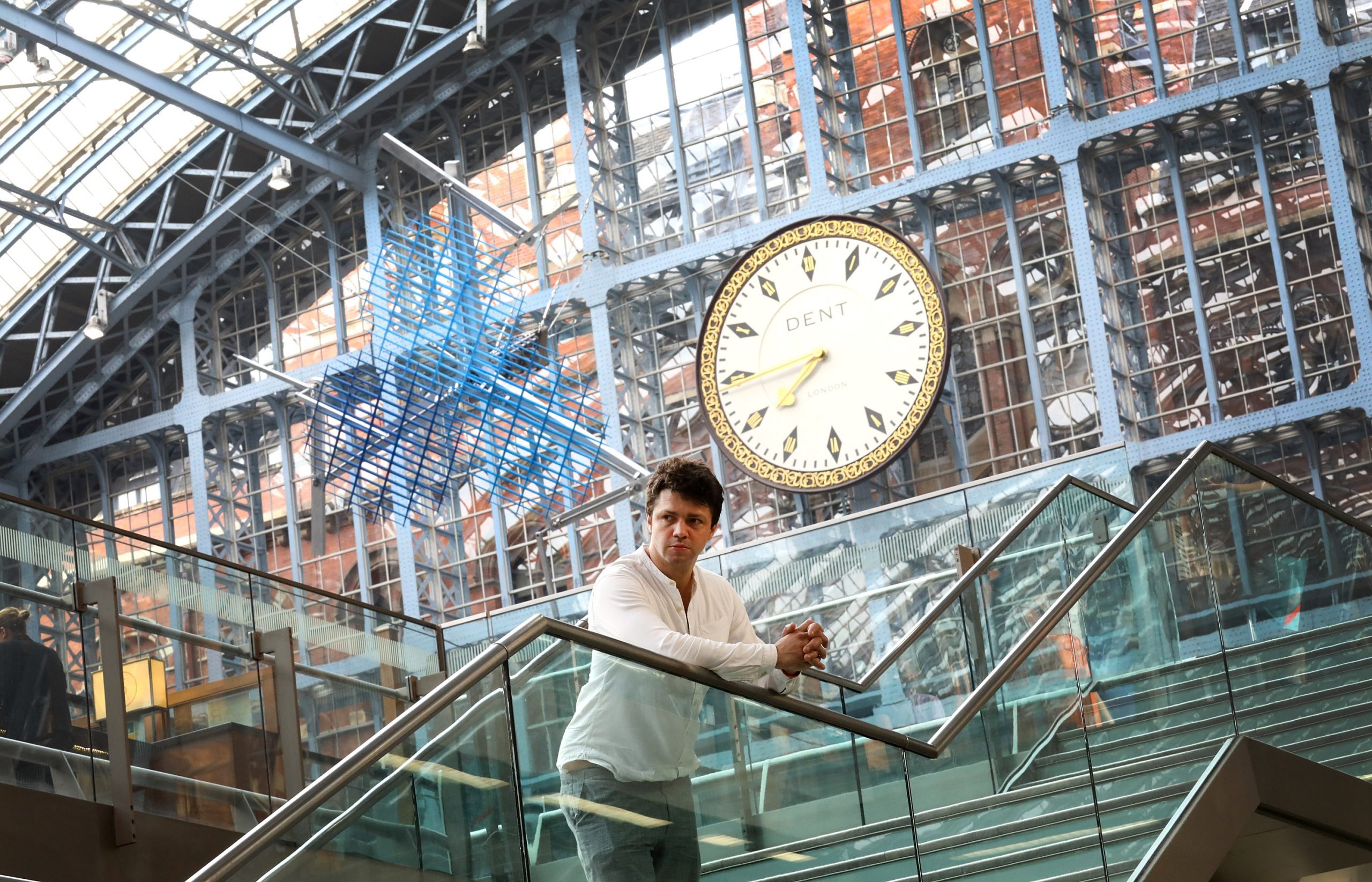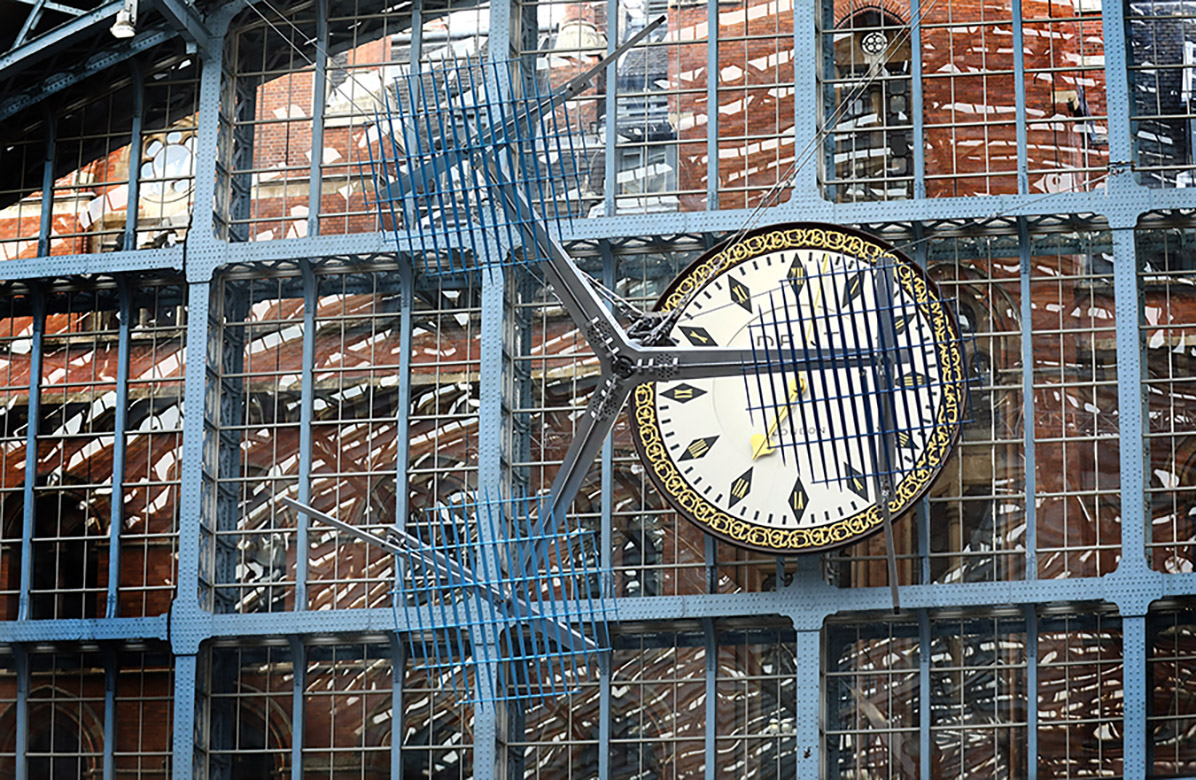This website uses cookies so that we can provide you with the best user experience possible. Cookie information is stored in your browser and performs functions such as recognising you when you return to our website and helping our team to understand which sections of the website you find most interesting and useful.
Artist Conrad Shawcross’ St Pancras ambitious installation honours the station’s past and future
By Michelle Johnson | 16 August 2017 | Culture
Sculptor Conrad Shawcross tells Tempus how his new installation has become a symbol of Britain’s changing times

Moving gracefully above the thousands of commuters who rush daily through London St Pancras International train station, The Interpretation of Movement (a 9:8 in Blue) is artist Conrad Shawcross’ most ambitious sculpture to date. The mechanical sculpture, an undulating clockwork of huge metal beams in pale blue, is suspended from the station’s well-known Barlow Shed roof above the Eurostar barrier.
”It’s a beautiful space,” Conrad tells Tempus. “That wonderful shed roof, which [poet laureate] John Betjeman fought so hard so save, makes such a statement. But at the same time it’s a difficult space to fill in comparison to a gallery because everyone is rushing for their trains rather than being there for the art first.
“My aim was to bring art to a place of fast-paced travel and stress,” he continues. “The piece is a real nod the roof, it harks back in terms of ambition and scale and that Victorian sense of analogue movement, but it’s actually a very modern structure – the materials we used are aluminium, steel and carbon fibre.”
Conrad insists there is no political statement to the work, which was commissioned for the annual Terrace Wires programme, and that the meaning lies within the abstract interplay of the structure's components rather than its unique position within the station. "It’s become a real point of interest, that it hangs over the glass wall of the Eurostar," says the 40-year-old artist. “It’s now both an opening and closing, like the aperture of a camera lens.
”The works that are most successful are the ones you lose control of, that take on a life of their own outside of you and form something unexpected. That’s really exciting to me,” he says, adding of his sculptural style as a whole. “I make a lot of machines that take on rationale of machines – they’re authoritative by their nature, but not particularly of use. I think of it as a cloak of artwork in disguise.”
Five years ago, Conrad became the youngest member of the Royal Academy of the Arts, a privilege and title that he hopes will encourage emerging artists. “As a sculptor it can be difficult to get interest or patronage, so being part of the RA is a great endorsement,” he says. “However, now that I’m 40 I’m looking forward to a new, younger ‘youngest member’ to join.”








